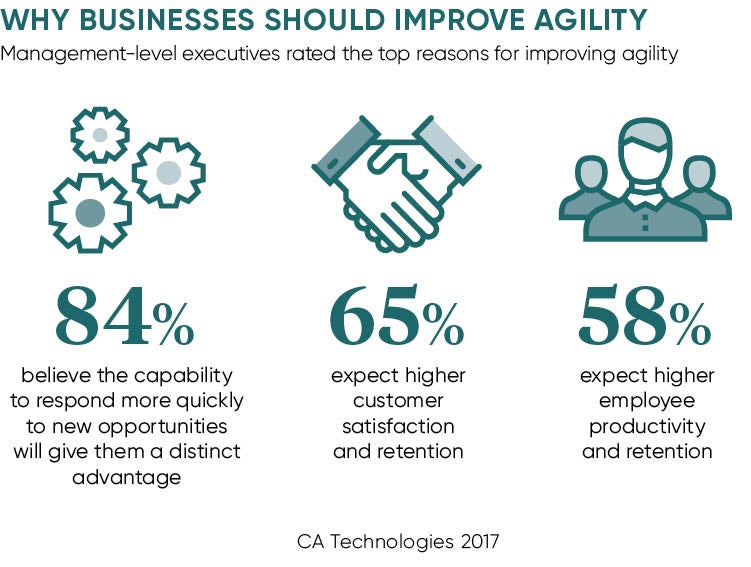Who doesn’t love Lego? It’s the toy that never goes out of fashion. A survey by Royal Mail shows Lego is the number-one toy on children’s Christmas lists this year, ahead of bikes and video-game consoles. New sets include a Star Wars tie-in for The Last Jedi movie and Lego Women of Nasa.
And how does Lego do it, year after year? The secret is a form of pre-emptive thinking. Lego observes trends in the offing and takes action well before necessary.
When Lego sensed that smartphone-addicted young teens might be losing interest in plastic bricks, it launched The Lego Movie, which pulled in half a billion dollars at the box office, and put the product front and centre for a new generation. A conveyor belt of movies continues to rake in cash and pump out the marketing message to the target audience.
To combat the lethal threat of video games, Lego created its own. Since 1995 there have been 68 Lego video games, each guiding players towards the world of plastic bricks.
And now Lego is entering augmented reality (AR). Brickheadz is a new AR app for Google’s Daydream platform. And there’s a new AR app for iPhones running on Apple ARKit, which adds animations such as dragons around Lego models. Now smartphones help promote Lego.
Lego identifies threats and kills them before they flourish. This early-warning system is a golden quality in companies. It’s one of the components of a truly agile enterprise. Many companies call themselves agile, but only elite performers move pre-emptively like this.

Sometimes this philosophy requires repositioning the enterprise from a shrinking sector to a growing one. Another Scandinavian company, Volvo, offers an exemplar. It announced in July that every car it launches from 2019 will be electric or hybrid. Fossil fuel only is out.
Like Lego, Volvo is moving early, before it needs to. A new brand Polestar will take on Tesla head to head in the electric supercar market. It aims to beat Tesla into China; a near certainty since Volvo is Chinese owned and already runs production plants there. In the next half decade, electric cars will throw the car market into turmoil. Volvo aims to be a disrupter, not a sitting duck.
Will it succeed? Who knows? Another hallmark of agility is a willingness to fail. The kings of failure are, of course, the world’s second largest tech company. Google employs the brightest stars of tech, on astonishing salaries, yet clocks up high-profile flops with endless enthusiasm.
Remember these? It’s a long list which includes Google Answers, iGoogle, Google Buzz, Google Bookmarks, Google Catalogs, Google Notebook, Google Code Search, Google Gears, Google Related, Google Directory, Google Sets, Google Health, Google Labs, Google Accelerator, Google Video and Google Wave.
Google Glass was a set of eyeglasses which delivered information to the user’s eyeballs. A front camera offered the chance to record your entire life as you viewed it. Tech journalist Robert Scoble gushed about the glasses in 2013: “I just wore Google’s Glasses for two weeks and I’m never taking them off.” Alas, the product was soon axed. This summer Google had a change of heart and Glass will be back with us.
There’s another lesson. Agile is not smooth. Agile is chaotic. This list of experiments is what makes Google agile.
One frequent factor found in companies with a track record of agility is an overriding purpose
The messy nature of agile means there may never be an agreed definition. Plenty have tried. Accountancy firm KMPG has an Agility Index, and Forrester has The 10 Dimensions of Business Agility. But there’s always an indefinable quality to the idea.
One frequent factor found in companies with a track record of agility is an overriding purpose. This North Star offers a way to navigate through the chaos. Google started out with the slogan, “To organise the world’s information and make it universally accessible and useful.” All efforts supported that goal, no matter what direction the company took.
Amazon is the best example today. The company is now a vast ecosystem of divisions from robotics to data storage, truly living up to founder Jeff Bezos’s idea of a company as exotic as the Amazon River and rainforest. But all divisions are united around a clear ethos.
Mr Bezos’s mission statement is: “We seek to become Earth’s most customer-centric company.” He elucidates: “This is bigger than Amazon.com. What we want to do is uplift the worldwide standards for customer service and customer centricity. Sony, born after WWII, if you look at their early mission statement, was not to be known for quality. It was for Japan to be known for quality. Not Sony, Japan. That is what we want to do. It would be that we set a new example for customer service and customer centricity, that other companies look at, admire and want to emulate. And that is a mission that people can get excited about.”
The Amazon boss can invent and axe, restructure and re-engineer, knowing all staff are still orientated on that single goal.
As a footnote, being agile is demanding. It involves constant challenging of tradition. At Lego, a decade of constant growth is now being followed by yet another shake-up. Chairman Jørgen Vig Knudstorp announced in September that around 8 per cent of the global workforce would be lost as sales showed a mild dip. He blamed ten years of success, saying: “In the process, we have added complexity into the organisation which now in turn makes it harder for us to grow further. As a result, we have now pressed the reset button for the entire group.”
Wait until a slowdown becomes a malaise? You don’t get to the top of Santa’s list with that attitude.

